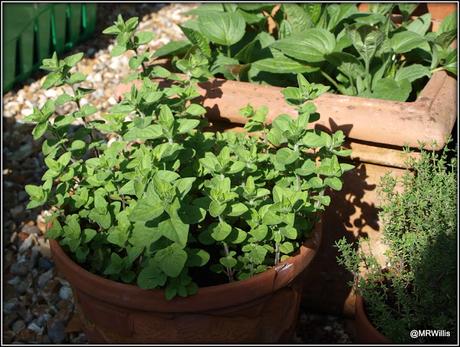
Greek Oregano
Jane and I use lots of herbs in our cooking - in fact there is hardly a meal prepared in our kitchen that doesn't use herbs of some sort, though I'll admit we do use a lot of dried ones too. In my opinion some herbs are actually better - certainly different - when dried. Oregano is the best example of this, with Thyme a close second. With such a constant demand for herbs, I sometimes find it hard to maintain a steady supply, but over the years I have learned what we use most of, and have adjusted my planting to suit. In the Summer time we often eat salad-based meals and these usually call for loads of fresh herbs. For instance one of our all-time favourites is Tabbouleh, which needs masses of Mint and Parsley. An authentic Tabbouleh has only a small proportion of grains (usually Bulgur wheat) and about 75%+ of herbs. I'm not sure what a Middle-Eastern person would make of our version of this dish, but we certainly enjoy it, and as the years go by we tend to put a greater and greater amount of herbs in.
I find that Parsley is the most difficult herb of which to maintain an adequate quantity. In my dry sandy soil it runs to seed very quickly, and it also sometimes succumbs to Carrot Root Fly. This year I have adopted a new tactic: I broadcast-sowed a whole packet of Parsley seeds in the border where most of the fruit trees are. The germination rate seems to have been pretty good...
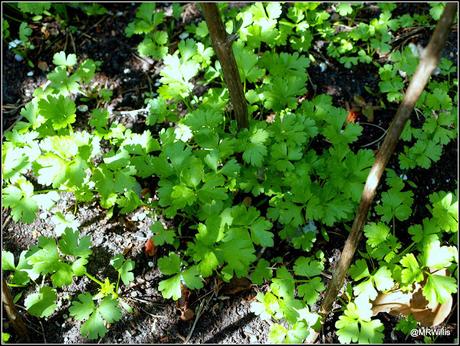
A mass of young Parsley seedlings
In the same border I have several clumps of Greek Oregano. As well as being used in cooking, these help to disguise the rather stark black plastic pots. Furthermore, when these plants flower, all the bees and butterflies for miles around flock to them!
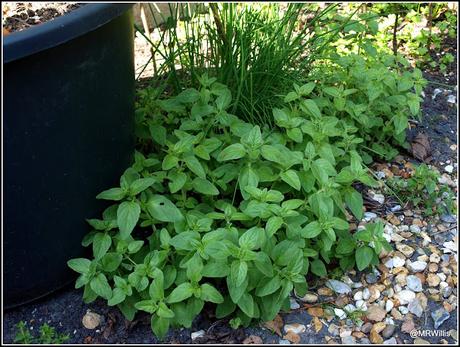
Greek Oregano
In our house, Mint is also predominantly a Summer herb. The weak spindly stems which are all that can be produced on the mythical "sunny windowsill" in Winter have little appeal. We prefer the robust, vigorous growth the plants put on in May, June or July. You cut some stems and within days they have regenerated! The Moroccan Mint is our favourite, and it has a bit of a history too. Its ancestor was a little plant in a 7cm pot which I bought in a Farmers' Market many years ago. Since then it has been propagated via root-cuttings many many times and is still as good as ever.
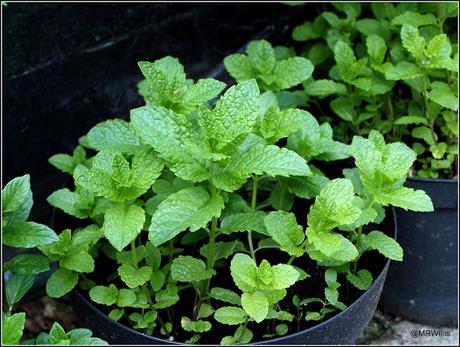
Moroccan Mint
I have a few other types of Mint too, but they are mostly more for ornament than for culinary use. Like this variegated Pineapple Mint, for instance. It looks great but its smell and taste mean that it is not very versatile. OK as a garnish on a tropical fruit salad, I suppose...
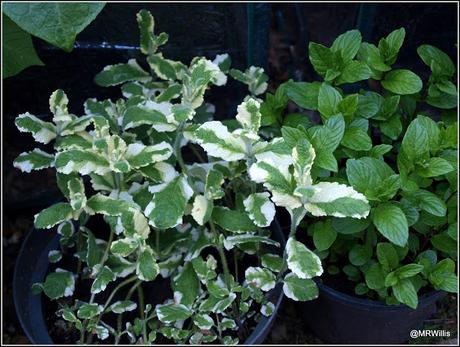
This Black Pepper Mint is also quite striking to look at, with its very dark-coloured stems. Unfortunately this variety seems to go leggy very quickly, and I find it hard to keep it looking nice.
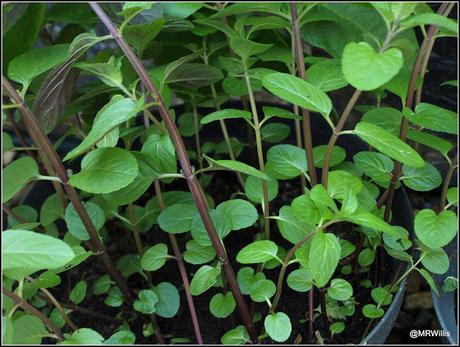
Another herb that I love is Winter Savory, although I do acknowledge that it is less versatile than many others. It has a very distinctive taste (though some would describe it as rather "medicinal"). It is the perfect partner for beans, especially Broad Beans, which is convenient, because (despite is name) it's at its best at the same time as the main harvest of Broad Beans.
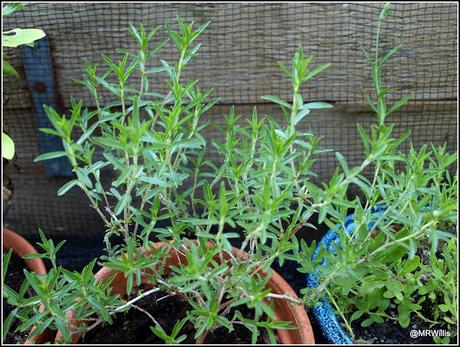
Winter Savory
A herb of a much milder disposition is the Chive, the most diminutive member of the Allium family. Like so many other herbs, this one is incredibly easy to grow: it needs little space and has no special site or soil requirements. Its uses are many and varied. Its mild oniony flavor goes with many different things. We like it sprinkled uncooked as a garnish on top of a dish, (such as a tomato or potato salad) immediately before serving, but it is also good cooked, for instance in an omelet. Chives also have a big visual appeal, and everyone who grows them should really try to leave at least a few to flower, rather than cutting them all. Their modest height, coupled with their attractive mauve-pink blooms make them ideal candidates for edging a border.
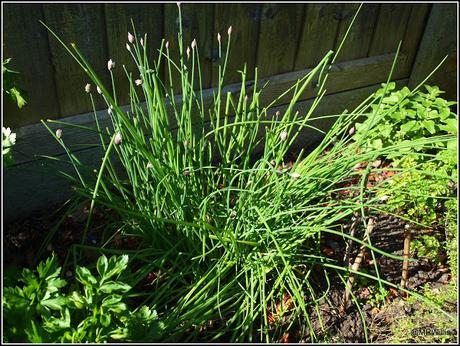
Chives - in bud at present.
Returning to my original theme... one of the best things about growing herbs is the fact that with a few exceptions (e.g. Lovage), herbs are quite small plants, so they can easily be grown in small spaces. Many of them do well in pots and containers of one sort or another, or in that odd little space that is too small for anything else. If you are not already a herb devotee, I suggest you give them a go!
